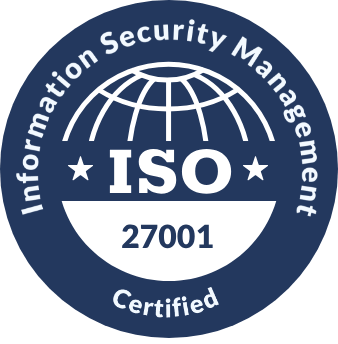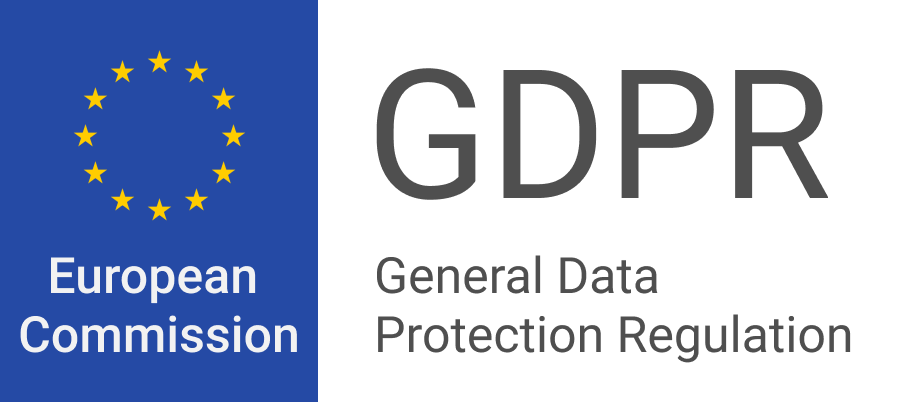Quick answer:
Clients say yes to a Preventive Maintenance plan when it is clearly tied to their problems, easy to understand, simple to budget for and consistently delivered.
- Start by understanding their risks and priorities
- Build an asset-based maintenance schedule template
- Turn technical requirements into plain-English tasks
- Package your services into a few clear options
- Price for predictability, and
- Back it all up with professional reporting and smooth communication.
When you systemise this with job management software, your plan becomes easier to sell, easier to deliver and far more likely to be renewed year after year.
If you’re like most tradies or field service business owners, you’ve probably felt the stress of living off breakdowns and emergency call-outs. One week you’re overbooked and scrambling; the next, the phone goes quiet. It’s hard to grow, hard to roster staff and hard to predict your income.
A well-built Preventive Maintenance plan changes the game. Instead of waiting for things to fail, you help your clients prevent breakdowns, stay compliant and budget with confidence. In return, you get steady, recurring work and a more stable business.
The tricky part isn’t doing the actual maintenance. You already know how to service equipment. The tricky part is designing a plan and a maintenance schedule template that clients understand, trust and are willing to sign.
Let’s walk through how to build a Preventive Maintenance plan that ticks all those boxes.
Start with the client’s pain, not your checklist
The first mistake many tradies make is starting with their own checklist: “Here’s everything we usually inspect, test and replace.” That’s useful later, but it’s not how you win a client over.
Clients are focused on their worries, not your tasks. They’re thinking about:
- Downtime that costs them money
- Safety risks to staff, tenants or customers
- Failing an audit or inspection
- Surprise repair bills that blow the budget
So the first step is a conversation, not a quote. Ask what has caused them headaches over the past year. Find out which parts of their site or operation are the most critical. Listen for phrases like “we can’t afford this to go down” or “that inspection always stresses me out”.
When you shape your Preventive Maintenance plan around these concerns, you’re no longer selling “a service”. You’re offering protection, predictability and peace of mind. That’s what clients will pay for.
Map assets and risks before promising anything
You can’t maintain what you haven’t mapped. Before you think about pricing or plan options, you need a clear picture of exactly what you’re responsible for.
That means putting together a basic asset register. For each piece of equipment or system, note:
- What it is (asset type)
- Where it is (location)
- The make, model and age, if you can get it
- Its general condition
- How critical it is to the business
Pay special attention to safety and compliance-related assets: fire systems, emergency lighting, lifts, gas lines, electrical protection devices and anything else tied to regulations or standards. These often drive the minimum level of Preventive Maintenance required.
This asset list becomes the backbone of your Preventive Maintenance plan. It tells you what needs attention, how often and how serious the consequences are if something fails. It also feeds directly into your maintenance schedule template later on.
When the client can see that you’ve taken the time to understand their site properly, they’re more likely to trust your recommendations.
Turn technical requirements into simple tasks
Preventive Maintenance is heavily influenced by manufacturer guidelines, Australian Standards, codes of practice and industry norms. These are essential, but they’re not exactly light reading for your average building manager or business owner.
Your job is to look at those technical requirements and convert them into a set of clear, repeatable tasks.
Instead of quoting clauses, think in terms of:
- What you’re checking or testing
- How often does it need to happen
- What it achieves from the client’s point of view
For example, a technical requirement might translate into simple phrases like “test safety devices to make sure they trip when needed” or “clean and inspect filters so your system runs efficiently and doesn’t strain the motor”.
You’re still following the standards behind the scenes, but you’re presenting the work in a way that feels practical and understandable. That builds confidence instead of confusion.
Build a clear, client-friendly maintenance schedule template
Once you know the assets and the technical requirements, you can start shaping your maintenance schedule template. This is the part of your Preventive Maintenance plan that shows what happens across the year.
A good template lays things out in a way that’s easy to follow. It usually includes:
- Asset groups or areas of the site
- The frequency of visits (monthly, quarterly, biannual, annual, seasonal)
- The main tasks completed at each visit
- Any compliance tests or inspections tied to particular dates
- Notes where access or shutdowns are needed

The key here is structure and clarity. Group tasks by visit so the client can see how the year plays out. They should be able to look at your schedule and immediately understand:
- When you’ll be on site
- What you’ll be doing
- How it covers their risks and obligations
This schedule is not only a sales tool. It’s something your technicians and office staff will use every day. Keeping it clear allows you to load it into your job management software, replicate it across similar sites and ensure the same standard of Preventive Maintenance is delivered each time.
Package your plan into options, not a single take-it-or-leave-it offer
Many clients aren’t sure what level of Preventive Maintenance they really need. If you give them one complex option, it can feel like a big, risky decision. If you give them a couple of well-defined choices, it suddenly feels more manageable.
Think about creating two or three plan levels that build on each other. For example, you might move from basic compliance and safety checks at the entry level to more comprehensive performance checks and priority response at the higher levels.
The key is that each plan is clearly explained and easy to compare. Clients should be able to see:
- What’s included
- What’s not included
- How each level reduces risk or improves reliability
This helps them decide how much protection and predictability they want, within their budget. It also gives you room to upsell over time as they see the value of Preventive Maintenance in action.
Price for profit and predictability, not guesswork
Even the most beautifully designed Preventive Maintenance plan fails if it isn’t priced properly. Underpricing might win the job, but it usually leads to rushed visits, corner-cutting and frustrated techs. Overpricing loses the job before you even start.
To price confidently, look at:
- How much time each visit will realistically take, including travel and inductions
- The admin is involved in scheduling, communication and reporting
- Consumables and common minor parts you’re likely to use
- Extra time needed for older or badly maintained assets
- A healthy margin that reflects your expertise and overheads
Consider whether you’ll charge per visit or roll things into a fixed monthly or quarterly fee. Many clients prefer a set recurring amount, because it makes budgeting easier and aligns nicely with how they view Preventive Maintenance – as an ongoing service, not a series of random one-offs.
When you present pricing, don’t just show the total. Connect it back to what it protects them from: expensive after-hours breakdowns, failed inspections, unplanned downtime and sudden capital replacement costs.
You’re helping them swap unpredictable pain for predictable spend.
Make the value visible with reports, photos and records
Preventive Maintenance is one of those things that can fade into the background if you let it. If the equipment keeps working and no one hears much from you, some clients start wondering, “What are we actually paying for?”
That’s where clear, consistent reporting comes in.
After each visit, send a report that includes:
- What was inspected or serviced
- Any issues found and what you did about them
- Photos where they help show the before-and-after or highlight a problem
- Any risks that need follow-up work
- Confirmation of compliance tests carried out
Over time, these reports build a rich asset history. You can see patterns, pick up recurring faults and make better recommendations about repairs versus replacement. The client can see that your maintenance schedule template is being followed and that you’re actively looking after their site.
Reporting turns Preventive Maintenance from a silent cost into a visible, documented service. It reminds the client why renewing the plan is a smart decision.
Present your plan as a proposal, not a basic quote
A Preventive Maintenance plan is a long-term partnership. It deserves more than a one-page quote with a figure at the bottom.
Presenting your plan as a proposal allows you to tell the full story. You can briefly summarise the issues you found or the risks the client is facing, explain your Preventive Maintenance approach and then show how your maintenance schedule template and plan options address those issues.
The structure doesn’t need to be complicated, but it should feel complete. A good proposal gives the client context, clarity and confidence. They understand what you’re recommending, why it matters and what it will look like in practice.
This extra effort differentiates you from competitors who send generic quotes. It signals that you are organised, professional and serious about looking after their site long-term.
Make approval, scheduling and renewal as easy as possible
Once the client likes your Preventive Maintenance plan, the last thing you want is friction at the approval stage.
Make it simple to say yes. Offer digital acceptance or e-signing. Be clear about start dates, contract length and any notice periods. Explain in normal language how you’ll handle access, keys, inductions and safety requirements.
Once the plan is live, keep communication smooth. Confirm bookings, send reminders and follow up promptly with reports and recommendations. If you need to reschedule, do it in a way that still shows you’re in control.
As renewal approaches, you should be able to refer back to:
- The visits completed
- Issues prevented or caught early
- Reductions in breakdowns or urgent call-outs
- Improvements in compliance and safety
When a client feels informed and looked after all year, renewing their Preventive Maintenance plan becomes the obvious choice, not a hard sell.
Systemise everything with the right tools
A Preventive Maintenance plan that relies on one person’s memory, a handful of spreadsheets and some sticky notes is always at risk of falling over. To deliver consistently, you need systems that your whole team can rely on.
That means:
- Standardised maintenance schedule templates you can reuse and adapt
- Digital checklists for technicians so tasks aren’t missed
- Centralised asset records and service history
- Automated recurring jobs and reminders
- A clear link between quotes, jobs, reports and invoices
This is where job management software is no longer a “nice to have” but a necessity. It lets you turn your carefully designed Preventive Maintenance plan into a well-oiled machine: scheduled automatically, delivered consistently and reported professionally.
When your systems are tight, your technicians feel supported, your office staff aren’t chasing paperwork, and your clients see a reliable, organised partner looking after their assets.
Turn your Preventive Maintenance plan into a growth engine
Building a Preventive Maintenance plan that clients will actually buy isn’t about throwing a few extra line items into a quote. It’s about deeply understanding their risks, mapping their assets, translating technical requirements into practical tasks and laying it all out in a clear maintenance schedule template.
You’ve seen how the pieces fit together:
- Start with the client’s pain and priorities
- Build an accurate asset and risk picture
- Turn standards into simple, understandable tasks
- Structure your year with a clear schedule
- Package your services into easy-to-choose options
- Price for predictability and profit
- Make your value visible with strong reporting
- Present your plan as a professional proposal
- Remove friction from approval, scheduling and renewal
- Systemise everything so your team delivers every time
Do this well, and you stop chasing random breakdowns. Instead, you build a stable base of recurring Preventive Maintenance work, happier clients and a business that’s worth a lot more in the long run.
This is exactly where i4T Business steps in to help.
With i4T Business, you can:
- Set and follow a maintenance schedule through your calendar
- Get assigned for recurring jobs for the client’s Preventive Maintenance visits
- Give technicians digital checklists so the right tasks are done every time
- Capture photos, notes and signatures on-site and turn them into clean, professional reports
- Store maintenance histories, compliance records and documents in one place
Send quotes, proposals and invoices that match your Preventive Maintenance plans, not just one-off jobs
If you’re ready to move from reactive chaos to predictable, profitable Preventive Maintenance work, it’s time to put the right system behind your plans.
Book a demo of i4T Business and see how quickly you can turn your Preventive Maintenance strategy into signed contracts, smoother workflows and long-term clients who actually enjoy working with you.
FAQs
A Preventive Maintenance plan is a structured program of regular inspections, tests and services designed to keep equipment and systems running reliably. Instead of waiting for things to break, you follow a set maintenance schedule template that aims to reduce breakdowns, improve safety and help the client stay compliant and in control of costs.
Clients prefer Preventive Maintenance because it reduces surprises. They experience fewer breakdowns, have less downtime, pass audits more easily and can plan their maintenance budget. Rather than dealing with constant emergencies, they know what work is coming up and why.
A good maintenance schedule template usually lists asset groups or locations, visit frequencies (monthly, quarterly, annually, etc.), the tasks completed at each visit and any key compliance checks. It should be easy for both your team and the client to read, so everyone understands what will happen throughout the year.
Service frequency is usually guided by manufacturer recommendations, Australian Standards, regulatory requirements and your own field experience. You also need to consider how critical the asset is and the environment it operates in. Critical or harsh-condition assets generally need more frequent Preventive Maintenance than low-risk, lightly used equipment.
Job management software makes it much easier to deliver Preventive Maintenance consistently. It lets you set up recurring jobs based on your schedule, assign digital checklists to technicians, keep a full asset history, automate reminders and produce professional reports.
For price-focused clients, shift the conversation from “how much does this plan cost?” to “how much does it save compared to constant breakdowns?” Talk about reduced emergency call-outs, lower after-hours rates, fewer interruptions to their operations and better compliance outcomes. Show how a predictable Preventive Maintenance fee is often cheaper than a year of reactive repairs and stress.
Hot off the press!











